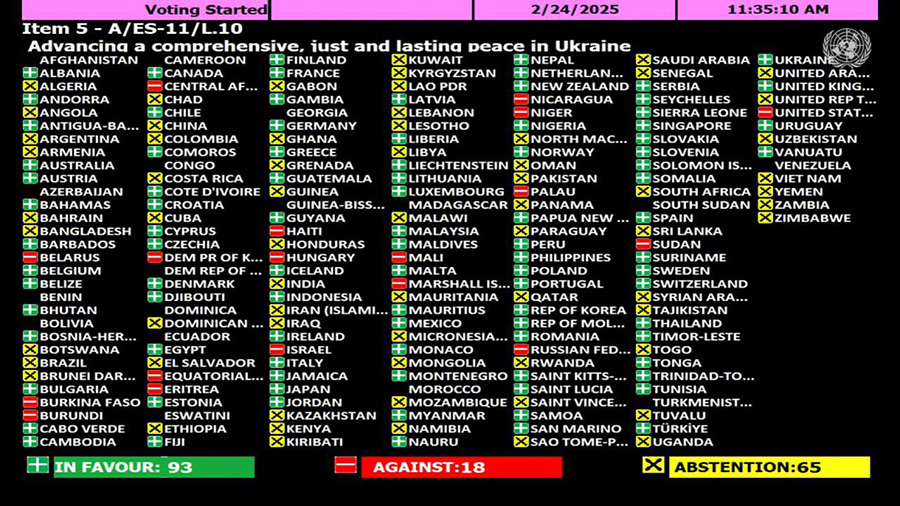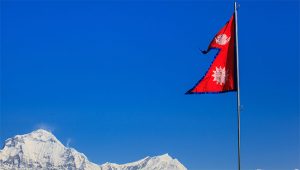
With the news that Nepal has signed a concessional loan of 150 million US dollars from the World Bank for disaster management, the issue of foreign loans has come into debate. Moreover, the government has already taken a loan of Rs 136 billion in the first three months of the current financial year.
The country’s debt burden, compounded by international financial institutions like the World Bank and IMF, has become a critical issue, raising questions about whether such loans serve development needs or exacerbate long-term dependency and poverty. This is particularly evident when considering the role of international lenders in Nepal and the broader Third World.

The loan assistance was signed when Finance Minister Bishnu Paudel was in the US to attend the annual meeting of the World Bank Group and the International Monetary Fund. It is said that the amount, that will be used as budgetary aid, will be used for disaster rehabilitation, regeneration, and reconstruction.
It is against the national interest of the government to accept loan aid for disaster management when compensation for the damage caused by disasters should come from global climate finance. It is a great misfortune for Nepal and its citizens that the government is taking loans to cover damages from a disaster, ignoring scientific data that indicates the disaster Nepal faced in the second week of October was caused by climate change. The files of projects proposed for approval to bring money from the Global Climate Fund are stuck in the Ministry of Finance. When the research report from scientists indicates that heavy rains are a result of climate change and have caused significant damage, the relevant authorities should take the initiative to provide subsidies equal to the losses incurred, funded by global climate finance instead of accepting a loan.
The study reviewed the impact of climate change on rainfall patterns, examining changes in probability, trends, and intensity. According to the report, the frequency of heavy rainfall has increased by 10%, with the probability of such events occurring now at 70%. Nepal has the opportunity to advocate for compensation at the international level for damages caused by climate-related disasters by utilizing the findings of this study. The government can attract global attention by presenting these results at the upcoming United Nations Climate Conference (COP 29).
Unbelievable but true, since 1990, Nepal has taken $7.2 billion in loans from the World Bank alone, a dramatic increase from the modest amounts it borrowed in the decades prior. This surge in loans followed the country’s adoption of neoliberal economic policies, infamously known as “Structural Adjustments” promoted by the West-led institutions such as the World Bank and the IMF. The restoration of democracy in Nepal in the early 1990s and corrupt politicians and bureaucracy provided fertile ground for these institutions to push their agenda, embedding the neoliberal framework into the country’s political and economic landscape. As a result, nearly half of Nepal’s GDP 45% is now tied to loans from the West, particularly the World Bank. The effects of this debt are far-reaching, creating a cycle of dependency that weakens the country’s autonomy and amplifies its economic vulnerabilities.
Loans disguised as development
In what was probably the first bold statement from the subaltern side in 2004 during her award reception speech, Arundhati Roy famously denounced the systemic inequalities perpetuated by Western nations and their institutions, which push impoverished nations to adopt detrimental policies while the wealth gap widens. Roy criticized the hypocrisy of rich countries and asked “What happens when rich countries that pay farm subsidies of a billion dollars a day, try and force poor countries to drop their subsidies?”
The World Bank frames its loans as tools for development. But, as pointed out by Cheryl Payer in her critical analysis, The World Bank: A Critical Analysis, these loans often serve the interests of large transnational corporations rather than the recipient countries. While loans are purportedly meant to alleviate poverty and support infrastructure, they ultimately subsidize the activities of multinational corporations, enabling them to expand their financial, commercial, and industrial operations in developing nations like Nepal. In exchange for billions of dollars in loans, the country forfeits a degree of control over its economy, while the rural and urban poor pay the price for this skewed development.
In Nepal, this trend is evident not only in loans tied to traditional infrastructure projects but increasingly in loans for climate-related initiatives – which is even more alarming.
For instance, loans for environmental projects, which should ideally be granted, are being pushed onto the Nepali government. The Damage and Loss Fund established after years of struggles through COP negotiations underscores the principle that poorer nations should receive grants—not loans—for their efforts to mitigate the effects of climate change. Simply because the rich nations destroyed the climate for the poor to suffer. Yet, the World Bank has successfully positioned these loans as necessary, even though Nepal, a nation with limited financial capacity, now bears the burden of repaying debts that should have been gifted.
The so-called Green, Resilient, and Inclusive Development (GRID) tantrum is a cryptic strategy to inject loans for climate-related projects in Nepal. As the lenders know very well, it would be a shame to push for a loan proposal to fund any climate projects. Hence, in the name of GRID, Nepal’s joint secretaries at the Finance Ministry, in return for lucrative IMF positions in DC (like the Indian Finance Secretary who was instrumental in approving the disastrous Enron contract), have already signed millions of dollars worth of loan agreements to fund GRID projects. The GRID was never needed, when we already adopted the UN-endorsed SDGs, and its financing mechanism, which prioritizes ODA, grants, and private sector engagement, and not loans.
However, interestingly, there is defeating silence on the part of the UN as well regarding World Bank-imposed GRID. The UN has hardly questioned the need for GRID despite millions have been spent in aligning Nepal’s plans with the SDGs.
Exploiting political instability
Nepal’s political instability over the past three decades has further facilitated this financial exploitation. Governments in Nepal change frequently, with ministers and leaders often more focused on short-term political gains than the long-term financial health of the country. This environment allows international financial institutions like the World Bank to exert greater influence, often making agreements with minimal oversight or resistance. Nepali finance joint secretaries, even cajoling the ministers with flawed arguments, frequently sign off on loans with little scrutiny, reinforcing the culture of dependency on Western lenders. The banks do not care about how Nepalis will pay back; regardless of payment, they are the ones who benefit.
The lack of long-term vision among Nepal’s political elite ensures that loans are seen as quick fixes, even though their repayments may cripple the country for generations. The World Bank, aware of this political disarray, operates comfortably, pushing through loans with ease while securing the interests of the multinational corporations it ultimately serves.
A broader pattern of exploitation in the Global South
Nepal’s debt crisis is not an isolated issue but part of a broader pattern of exploitation in the Global South, as outlined in Edward Feder’s analysis of the World Bank’s role in developing countries. Feder argues that the World Bank’s actions are less about development and more about expanding capitalist interests in “vulnerable economies”. In doing so, the Bank contributes to the worsening of social problems like poverty, unemployment, and malnutrition. The institution, while promising development, instead deepens economic divides and increases the dependency of poor nations on wealthy financial structures.
In Nepal, this has been particularly apparent in the push for neoliberal economic policies post-1990, which have weakened the country’s self-reliance. The “structural adjustments” are only to free poor countries from the “full control” of multinationals like Coca-Cola, Shell, KFC, Pepsi, and Nestle. You can see what happened in Iraq after the invasion: the new invader-backed policy allowed foreign companies to grab 100% of all lucrative business with full permission to take back the profits. The World Bank’s extensive loan portfolio in Nepal has done little to alleviate the deep-seated issues of poverty and inequality. Instead, it has entrenched them by encouraging a form of development that prioritizes the interests of external corporations over the well-being of Nepali citizens and promoted a big corruption network. Where has the $7.2 billion gone? If you search, you will find only news about loan agreements, not about what the projects achieved.
It is more concerning for countries like ours that the United Nations remains silent on the debt burdens imposed by the World Bank through ( GRID )instead of providing grant aid, which Nepal and similar countries rely on. Since 2015, the UN has invested billions to align Nepal’s plans with the Sustainable Development Goals (SDGs). Budget coding has been focused on achieving these goals. The SDGs are more significant than the World Wide Web Grid and serve as a development blueprint that poorer countries have long prioritized.
The 2024 report on the Sustainable Development Goals reveals alarming stagnation in global progress, with only 17% of the goals currently on track. This raises serious questions: Why is the World Bank unable to comply with the SDGs? Why should another development model be created that confuses poorer countries?
The UN-endorsed Sustainable Development Goals (SDGs) and their financing mechanism prioritize Official Development Assistance (ODA) over debt, grants, and private sector involvement, which benefits poorer countries like Nepal. However, the UN’s Global Resource Initiative for Development (GRID) and its lack of communication regarding the GRID Partnership raise concerns about the rationale behind the initiatives and expenditures aimed at achieving the SDGs.
If the commission is designed to facilitate foreign loans, what is its true purpose? Nepal should be able to uphold the interests of its citizens and challenge the decisions made by multinational banks, rather than simply acting as a puppet for them. The United Nations in Nepal must be bold enough to confront multilateral banks and organizations that serve the interests of wealthy nations and large corporations under the guise of poverty alleviation. Nepal deserves to receive its rightful subsidies without being overshadowed by these entities. If this does not happen, the United Nations may appear indistinguishable from other donor agencies despite its claim of being a unified organization.
Whither sovereignty?
The current debt situation in Nepal, driven in large part by loans from the World Bank, demands urgent reflection. While the World Bank markets itself as a development partner, the reality is far more troubling. As Arundhati Roy, Cheryl Payer and Edward Feder have pointed out, the powerful Western institutions are more aligned with the expansion of capitalist interests than with genuine development goals. For Nepal, the path forward requires a rethinking of its relationship with international financial institutions. The country must prioritize grants over loans for climate and environmental projects and resist the push from entities like the World Bank that seek to exploit its political and economic vulnerabilities.
The political instability in Nepal over the past three decades has seemingly allowed for increased economic exploitation by foreign interests. Governments frequently change, and political leaders often prioritize short-term gains over the long-term economic stability and development of the country. This approach directly affects both the nation and its citizens. No government appears to focus on which projects should be funded through loans and which should receive grants. Without a clear policy on foreign debt assistance, the burden of debt on citizens is likely to increase in the future. Ultimately, the country risks becoming entangled in the interests of more powerful nations.
Nepal’s leaders, especially the joint secretaries who play a big role as brokers for petty returns, must move beyond the short-term gains of quick loan agreements and adopt a long-term vision for sustainable growth that does not depend on foreign debt. Only then can the country begin to break free from the cycles of dependency that have defined its relationship with international lenders and regain control of its economic future.
























